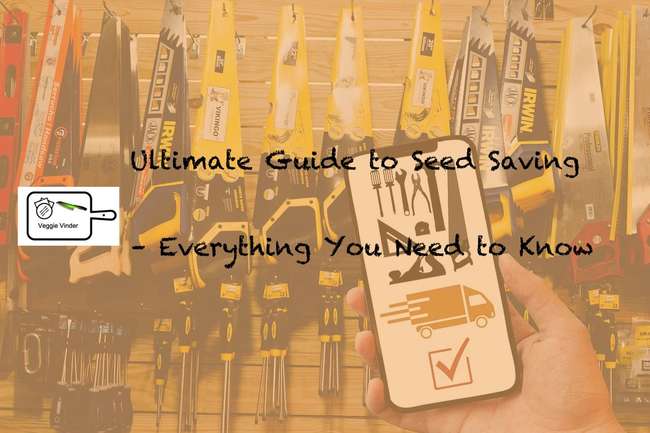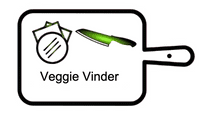Ultimate Guide to Seed Saving – Everything You Need to Know
In this post, you’ll find everything you need to know about seed saving including how to start, how to grow and store seeds, ideas for related activities, safety advice, and more.
Getting Started with Seed Saving What is seed saving?
Sowing seeds on purpose just for their future use (and not just to get a fresh crop of plants) is called "sowing seeds for seed saving.
" Seed saving is a practice that has been used for thousands of years by people all around the world, not just Native Americans, who are credited with starting the practice
Understanding the Terminology
When you think of a vegetable, what are your first naturally thoughts? Seed saving is a method of gardening wherein property is planted and cared for in order to harvest plants, flowers, and/or vegetables that are intentionally bred to grow without the use of genetically modified seeds. To achieve this goal, seed savers breed their own plants through: * Growing cuttings or divisions from already grown plants * Dividing existing plants by hand * Spontaneously growing a new plant from one part of an older plant’s stem

Open Pollinated Or Hybrid Pollinated
Most of the vegetables that are grown in most gardens are open pollinated or hybrid pollinated. Open pollinated plants can self-pollinate, which means that they make their own pollen and transfer pollen from plant to plant to produce seeds without any human interference. Hybrid plants, on the other hand, require humans to transfer pollen from one plant to another in order for them to produce seeds. There are two types of pollination: open pollinated or hybrid. With open pollinated plants, pollen is spread manually by hand or animals. Hybrid plants are created through cross breeding and genetically modified seed, so they can’t be reproduced in their natural state without the use of the latter.
Plant’s Life Cycle
In a typical life cycle of a plant, the seed germinates and grows into a shoot. This part of the plant will eventually produce an inflorescence, which is an arrangement of flowers that grow on top of the stem. These flowers contain reproductive parts, called gametes. The pollen from these flowers travels through the air and lands on other plants or animals’ bodies where it can fertilize their gametes. Open pollinated plants are able to self-pollinate while hybrid plants need human help in order to create seeds. Plants have a life cycle. They grow from seed, bloom into flowers, and eventually die when their fruit and seeds are ripe. They grow by using the energy from sunlight and the carbon dioxide in the air to produce oxygen and sugars that allow them to grow. After they die, plants become compost for new plants to start with.
What is Pollination?
Pollination is the process by which pollen grains are dispersed from the male part of a flower, called an anther, to the female part of a flower, called stigma. It is one of the main mechanisms for sexual reproduction in flowering plants. Pollination is the transfer of pollen grains, gametes, or embryos from the male part of one plant to the female part of another plant. This is necessary so that they can then produce seeds. Pollination can be done by wind, insects such as bees, and other means.
Types of Pollination
Pollination can be done by either wind, insects such as bees, or other means. Some flowers have physical structures called pollinators’ cups that are designed to attract insects. These cups include a nectar reward that the insects crave to gather enough nectar to fly away with pollen grains. Other flowers simply have a larger surface area of petals which makes it easier for bees or other pollinators to fly around them and collect pollen. Pollination can be categorized into two types: self- or cross-pollination. Self-pollination is when pollen is transferred from the male part of one plant to the female part of the same plant. Cross-pollination is when pollen is transferred between different plants of different species, such as between apple trees and cherry trees. This transfer can happen through either physical (wind) or sexual (insects) means.
1 – SELF-POLLINATION
Self-pollination is when pollen is transferred from the male part of one plant to the female part of the same plant. This transfer can happen through either physical (wind) or sexual (insects) means. 2 – CROSS-POLLINATION Paragraph: Cross-pollination is when pollen is transferred between different plants of different species, such as between apple trees and cherry trees. This transfer can happen through either physical (wind) or sexual (insects) means. Self-pollination is when pollen is transferred from the male part of one plant to the female part of the same plant. Cross-pollination is when pollen is transferred between different plants of different species, such as between apple trees and cherry trees. 2 – CROSS-POLLINATION Paragraph: This transfer can happen through either physical (wind) or sexual (insects) means.
2 – OUTBREEDING POLLINATION
Outbreeding pollination is when pollen is transferred between plants of different species, when both parents are of the same variety. This can happen through either physical (wind) or sexual (insects) means. This transfer can happen through either physical (wind) or sexual (insects) means. O utbreeding is when pollen is transferred between different plants of the same species and is a form of cross-pollination but only one generation at a time.
Best Planting and Growing Season
When planting your garden, it is important that you have the right time of year when you plant the plants. The best planting and growing seasons are spring, summer, and fall. Fall is typically a good time to plant winter hardy plants. Spring is when most annual flowers are planted, while summer is when tomatoes and peppers are planted. One of the most important factors in gardening is the best time to plant. There are many factors to consider when deciding the best time to plant, including the type and variety of plants, the type of soil, and other factors. Of course, consulting a local nursery will provide more information but there are some key times that planting should avoid.
1 – Preparing the Soil
When preparing the soil, it is important to add organic matter, such as compost or manure. If the soil is allowed to dry out, it will become too hard for plants to grow. This can cause problems with plant growth and future harvests because the roots cannot get enough water and nutrients from their food sources. The best time of year to prepare the soil for planting is in the fall when temperatures are lower. The lower temperature allows for better drainage of the soil and prevents disease that can be caused by excess moisture. When planting, it is important that you have the right time of year. There are three different seasons for planting: spring, summer, and fall. For instance, spring is a good time to plant annual flowers, while summer is when tomatoes and peppers are planted. Summer is also when the most water can be used because plants use water more in warmer temperatures. Of course, consulting a local nursery will provide more information but there are some key times that planting should avoid.
2- Fertilization Needs
The best time of year to prepare the soil for planting is in the fall when temperatures are lower. The lower temperature allows for better drainage of the soil and prevents disease that can be caused by excess moisture. When planting, it is important that you have the right time of year because there are three different seasons for planting: spring, summer, and fall. For instance, spring is a good time to plant annual flowers while summer is when tomatoes and peppers are planted. Of course, consulting a local nursery will provide more information but there are some key times that planting should avoid. When preparing the soil for planting, it is important to add organic matter like compost or manure. Improperly prepared soil can lead to problems with plant growth and future harvests because the roots cannot get enough water and nutrients from their food sources. The best time of year to prepare the soil for planting is in the fall when temperatures are lower. The fall season is also when plants are most likely to need more water than they would during warmer months. Of course, consulting a local nursery will provide more information but there are some key times that planting should avoid avoid
What is the best way to store your seeds?
Storage is a very important part of seed saving, and everyone has their own preferences. The first option is to store your seeds in a cool and dry place, which is best achieved by storing them in a refrigerator or freezer. The fridge option is great for seeds that you want to keep for a short period of time. It will also help the plant grow faster. The freezer option is better for people who want their seeds to last as long as possible. Some people prefer the fridge method because it’s good for seeds that you don’t plan on using for a long time. Storage methods have both pros and cons, but the best way to store your seeds is by keeping them cool and dry in storage containers.
What is the best container to store seeds in?
Seeds need proper storage to stay fresher longer. The best way to store seeds is in a cool and dry place that has a low humidity level. There are 2 ways to store your seeds, by keeping them in the refrigerator or freezer. The freezer option is better for people who want their seeds to last as long as possible. Some people also prefer the refrigerator option because they only want their seeds stored for a short period of time. Storage is a very important part of seed saving and every method of storage has its own pros and cons. The best way to store seeds is in a cool, dry place that has a low humidity level. If you want your seeds to stay fresher longer, then storing them properly will help you achieve this goal.
What is the proper way to store seeds?
There are a few different ways to store seeds, but each has its own set of pros and cons. Seeds need proper storage to stay fresher longer. The best way to store seeds is in a cool and dry place that has a low humidity level.
